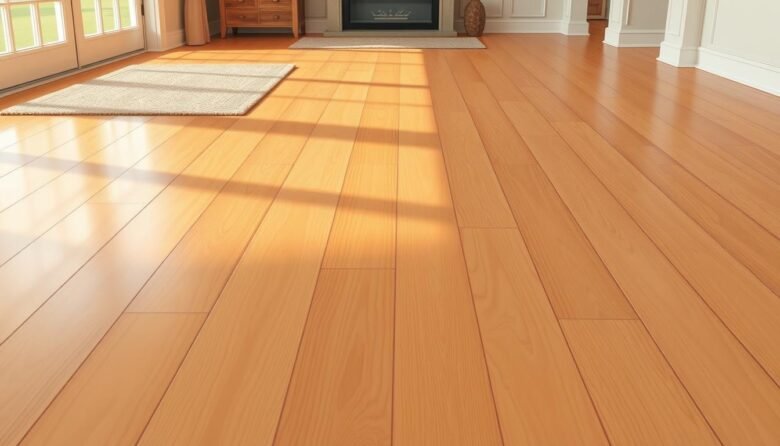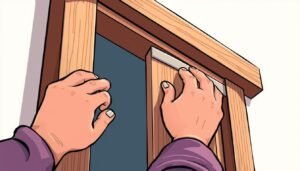Hardwood surfaces bring timeless beauty and value to any home. Many homeowners choose this material for its durability and classic appeal. Proper maintenance helps preserve that investment for years.
Daily life creates inevitable wear on your surfaces. Small actions make a big difference in preventing damage. Good habits protect the finish and structural integrity of your flooring.
Preventive strategies save time and money compared to repairs. This guide offers expert advice from professional cleaning services. You will learn comprehensive methods to keep your surfaces looking new.
These tips work for both solid hardwood and engineered wood. Implementing these practices maintains appearance and longevity. Start today to enjoy beautiful floors for years to come.
Key Takeaways
- Hardwood floors add value and beauty but require protection from daily wear.
- Preventive habits are more effective and economical than repair work.
- Small daily actions significantly extend the life of your wood surfaces.
- Both solid hardwood and engineered wood benefit from proper maintenance.
- Expert strategies help maintain structural integrity and surface finish.
- Professional cleaning services recommend these protective practices.
- Implementing these tips preserves your investment for years to come.
Understanding What Causes Scratches on Wood Floors
Daily activities and environmental elements can unexpectedly harm your investment in quality flooring. Recognizing these threats helps you develop effective protection strategies.
Different materials and finishes respond uniquely to various stressors. Combination factors often accelerate surface deterioration. Understanding these causes is the first step toward preservation.
Everyday Abrasives: Dirt, Sand, and Debris
Microscopic particles act like sandpaper on your beautiful surfaces. Each step grinds these abrasives into the finish. This creates gradual wear that accumulates over time.
Dirt and sand particles scratch with every movement. Even small amounts cause significant damage. Regular cleaning prevents this abrasive action.
The Impact of Furniture Movement and Pet Claws
Heavy items create deep marks when moved without protection. Chairs and tables need proper padding to prevent gouges. Sliding furniture causes the most severe damage.
Animal companions contribute to surface issues in multiple ways. Untrimmed nails leave numerous micro-scratches during normal activity. These small marks accumulate and damage the protective finish.
How Foot Traffic and Shoes Contribute to Wear
High-traffic zones show more visible deterioration over time. Entryways and hallways experience the most pressure. This concentrated use creates distinct wear patterns.
Footwear brings outside elements onto your beautiful surfaces. Hard soles and heels concentrate pressure in small areas. This can dent softer materials and accelerate overall wear.
Environmental factors also play a significant role. Sunlight exposure causes fading in affected areas. Humidity changes affect the structural integrity of the material.
Understanding these multiple threat sources enables better protection choices. Each factor requires specific prevention methods. Combined strategies offer the most comprehensive protection for your investment.
Essential Habits for Wooden Floor Care and Scratch Prevention
Simple daily routines create powerful protection for your investment. These practices form a complete system against surface damage. Consistent application preserves both beauty and structural integrity.
Implementing a Strict No-Shoes-Indoors Policy
Outdoor footwear brings damaging elements into your living space. Gravel, sand, and dirt cling to soles and get tracked inside. These particles act like sandpaper underfoot.
A dedicated shoe rack near entrances makes compliance easy. Provide comfortable slippers for family and guests. This simple change significantly reduces the amount of debris entering your home.
The Critical Role of Doormats and Area Rugs
Place quality mats at every entrance, both outside and inside. These barriers trap particles before they reach your surfaces. Choose mats with rough textures for better cleaning action.
Area rugs in high-traffic zones provide extra protection. Focus on entryways, hallways, and kitchen areas. These spots receive the most foot traffic throughout the day.
Regular cleaning maintains mat effectiveness. Shake out outdoor mats weekly. Vacuum indoor rugs frequently to remove trapped particles.
Regular Sweeping to Remove Abrasive Particles
Daily sweeping captures loose dirt and dust before damage occurs. Use soft-bristled brooms or electrostatic dust mops. These tools gently lift debris without scratching.
High-traffic areas need more frequent attention. Sweep entryways daily and other spaces every second day. This routine prevents abrasive buildup.
Microfiber mops offer deeper cleaning when needed. They capture fine dust that brooms might miss. Always use vacuum cleaners with soft brush attachments for hard surfaces.
These habits work together to create a protective barrier. Consistent practice throughout your home delivers the best results. Your beautiful surfaces will maintain their appearance for years.
Using Protective Pads and Rugs Strategically
Furniture and high-traffic zones benefit greatly from thoughtful placement of protective materials. These simple additions create invisible shields that preserve your surfaces.
Strategic protection works in two ways. It prevents direct contact between objects and your beautiful surfaces. It also distributes weight and movement more evenly.
Selecting and Applying Felt Pads to Furniture Legs
Apply quality felt pads to all furniture legs throughout your home. This includes chairs, tables, and heavier pieces. These pads create a soft barrier that prevents damage.
Choose the right size and thickness for each piece. Heavier items need thicker, more durable pads. Lighter furniture can use thinner options.
Regular inspection ensures continued protection. Check pads every few months for wear. Keep extra pads on hand for quick replacements when needed.
Placing Rugs and Runners in High-Traffic Areas
Area rugs provide excellent protection in busy zones. Focus on entryways, hallways, and kitchen areas. These spots receive the most foot traffic daily.
Use rug pads underneath for additional benefits. They prevent slipping and add extra cushioning. This combination protects your surfaces in multiple ways.
Rotate rugs periodically for even wear distribution. This simple habit extends rug life too. It ensures consistent protection across different floor areas.
Why You Should Avoid Chairs with Rollers on Hardwood
Office chairs with wheels create countless fine scratches. Each movement grinds small particles into the surface. This constant action damages the protective finish.
For home office situations, consider alternatives. Clear plastic mats cover the entire rolling area. They provide a smooth surface while protecting your investment.
Place rugs under dining tables and other furniture. This prevents direct contact between chair legs and surfaces. It’s an effective way to prevent scratches in high-use zones.
Different pad materials work best for various needs. Felt offers soft protection for stationary items. Rubber provides better grip for frequently moved furniture.
Proper placement maintains aesthetic appeal while offering protection. These strategies significantly reduce furniture-related damage. Your beautiful surfaces will thank you for years.
Special Considerations for Pet Owners
Four-legged family members create additional factors to consider when maintaining beautiful surfaces. Their natural behaviors and physical characteristics require specific approaches to preservation. Thoughtful strategies keep both your surfaces and your companions happy.
Keeping Pet Nails Trimmed to Minimize Damage
Regular nail maintenance significantly reduces surface wear from your animal companions. Untrimmed claws act like tiny chisels during normal movement. This creates micro-abrasions that accumulate over time.
Most pets benefit from monthly trimming sessions. Growth rates vary by breed and individual animal. Consult your veterinarian for proper technique and frequency recommendations.
Walking dogs on pavement provides natural nail filing. This helps maintain length between formal trimming sessions. Combined approaches offer the most complete protection for your surfaces.
Using Washable Rugs in Pet Feeding and Play Zones
Strategic rug placement creates protective barriers in high-activity areas. Focus on spaces where your companions spend the most time. This includes feeding stations, play zones, and favorite resting spots.
Choose washable, pet-friendly materials for easy maintenance. These rugs catch spills and provide cushioning during active play. Waterproof options work best near food and water stations.
Different breeds and sizes may require tailored approaches. Larger, more active animals need more extensive coverage. Observe your pet’s habits to determine optimal placement.
Immediate Cleanup of Accidents and Spills
Quick response to moisture events prevents permanent issues. Urine and other liquids can seep into seams and cause structural problems. Immediate action preserves both appearance and integrity.
Place protective mats under all food and water containers. These catch drips and spills before they reach your surfaces. Choose materials that are easy to clean and maintain.
Wipe wet paws immediately after outdoor activities. Standing moisture from rain or snow can cause warping. Use wood-safe cleaning solutions for any accident cleanup.
Different cleaning techniques work for various types of incidents. Blot liquids rather than wiping to prevent spreading. Prompt attention makes all the difference in long-term preservation.
Proper Cleaning and Maintenance Techniques
Effective maintenance routines form the foundation of lasting surface protection. The right approach preserves both appearance and structural integrity over time.
Different methods work for various situations throughout your home. Understanding these techniques ensures optimal results.
Choosing the Right Tools: Soft Brooms and Microfiber Mops
Select soft-bristled brooms for daily sweeping tasks. These gently remove loose particles without harming the finish.
Microfiber mops provide deeper cleaning when needed. They capture fine dust that regular brooms might miss.
Vacuum cleaners need soft brush attachments for hard surfaces. Avoid abrasive tools that can cause micro-scratches.
Steam mops should never be used on these surfaces. The heat and moisture can damage the protective finish.
Safe Cleaning Solutions for Wood Flooring
Use products specifically designed for these surfaces. They clean effectively without leaving harmful residues.
Mild soap with warm water works well for most situations. Avoid cleaners containing ammonia, vinegar, or oil soaps.
These harsh chemicals can degrade the protective coating over time. Proper cleaning prevents chemical damage and residue buildup.
Frequency depends on foot traffic levels in different areas. High-use zones need more attention than less-used spaces.
The Importance of Managing Indoor Humidity Levels
Maintain humidity between 35% and 55% for optimal results. Use a hygrometer to monitor levels accurately.
Humidifiers add moisture during dry winter months. Dehumidifiers remove excess moisture in humid summers.
Moisture management prevents swelling, warping, and cracking. This protection maintains structural integrity year-round.
Polish every 2-4 months with water-based products. Ensure compatibility with your specific finish type.
This process restores shine and adds an extra protection layer. It’s the best way to maintain beautiful surfaces long-term.
Addressing Minor Scratches and Knowing When to Call a Pro
Even with the best preventive measures, some surface marks may still appear over time. Understanding repair options helps maintain your investment’s beauty. Different approaches work for various damage levels.
DIY Solutions for Superficial Scuffs and Scratches
Minor imperfections often respond well to simple home treatments. Rubbing walnut meat over marks can temporarily conceal light surface issues. The natural oils help blend the affected area with surrounding surfaces.
Wood-tone touch-up markers offer another effective solution. These products come in various shades to match different finishes. They work well for small, isolated marks that need quick attention.
For very light abrasions, try an olive oil and vinegar mixture. Combine equal parts and apply gently with a soft cloth. This can help minimize the appearance of fine lines.
Vinyl surfaces require different approaches. Use products specifically designed for this material. Light polish can restore shine to slightly worn areas.
Repair kits with putty work for deeper nicks in vinyl. Color-matching compounds help blend repairs seamlessly. Always test any solution in an inconspicuous area first.
Assessing Damage: Deep Scratches vs. Surface Wear
Proper evaluation determines the right repair approach. Superficial issues affect only the protective coating. These typically respond well to DIY methods.
Deep scratches penetrate through the finish into the material itself. These require more extensive treatment approaches. Filler products can address moderate damage effectively.
Severe gouges may need complete section replacement. This is especially true for vinyl installations. Individual plank replacement maintains pattern continuity.
Water damage often requires professional assessment. Warping or buckling indicates structural issues. These problems need expert attention for proper resolution.
When Professional Refinishing Becomes Necessary
Extensive wear across large areas often justifies professional intervention. Dull finishes in high-traffic zones may need complete renewal. This process restores both protection and appearance.
Professional refinishing involves several precise steps. Sanding removes the existing worn coating. Damage repair addresses deeper imperfections before new application.
The final protective coat ensures long-lasting results. Expert application guarantees uniform coverage across the entire surface. This creates consistent protection throughout your space.
Complex patterns benefit from professional expertise. Vinyl installations need careful pattern matching during repairs. This maintains the visual flow of your design.
Sometimes replacement proves more cost-effective than repair. Professionals can assess which approach makes most sense. Their experience guides optimal investment decisions.
Regular maintenance reduces need for major interventions. However, professional help becomes valuable for significant damage. Their expertise preserves your surface’s long-term value.
Maintaining the Long-Term Beauty of Your Hardwood Floors
Periodic furniture rearrangement prevents concentrated wear in specific areas. This simple habit distributes weight evenly across your beautiful surfaces.
Protective sealants like polyurethane offer enhanced scratch and spill resistance. Allow proper curing time before using treated areas.
UV-protective finishes and window treatments prevent sun fading. Regularly inspect sun-exposed zones and rotate rugs for even exposure.
Install fireplace mats to catch embers and prevent burns. Seasonal deep cleaning and humidity adjustment maintain optimal conditions.
Consider professional services for regular maintenance or complex repairs. Scratch-resistant materials like luxury vinyl or engineered hardwood work well for new installations.
Consistent application of these strategies creates comprehensive protection. Your investment will maintain its beauty for decades with proper attention.



